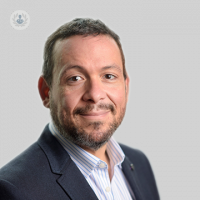The 3 stages of frozen shoulder
Autore:You may not have heard of frozen shoulder as it’s a rather rare condition. It roughly affects just 2% of the population causing one of their shoulders to become stiff and painful, in other words, ‘frozen’. This condition, which develops gradually, is often separated into three distinct stages. Mr Nick Ferran, an expert trauma and orthopaedic surgeon based in London, explains exactly what this condition is and what these three stages of frozen shoulder are.

What is frozen shoulder?
Frozen shoulder, medically known as adhesive capsulitis, is an inflammatory condition that causes inflammation of the lining inside of the shoulder joint capsule. When this capsule becomes inflamed, the bones are not able to move freely in the joint, causing stiffness. It eventually leads to thickening and scarring of the shoulder capsule.
What are the 3 stages of frozen shoulder?
We often describe frozen shoulder as going through three stages:
Freezing stage – this is usually when the shoulder starts to become increasingly more painful because of the inflammation inside the shoulder. It can happen over a period of 6-9 weeks during which you may notice your motion in the shoulder decreasing.
Frozen stage – this is where there's pain and stiffness. The pain may have subsided but the stiffness remains. This is caused by the scarring and thickening of the joint capsule as well as by muscle spasm from the pain. It can make activities more difficult to complete and lasts roughly 4 to 6 months.
Thawing stage - eventually, the pain goes away and the stiffness takes a longer time to settle and improve. We’ve said to patients in the past that frozen shoulder normally resolves within two years, but we now know in studies that even at seven years they notice a difference in their shoulder.
Who is more at risk of frozen shoulder?
Most of the time, frozen shoulder doesn't have a specific cause meaning it's not usually affected by an injury, certain sports or types of work.
Frozen shoulder most commonly affects people in middle age; from about 40 to the age of 65. Women are usually affected more than men. While diabetics get a more aggressive form of disease, most of my patients with frozen shoulder are actually not diabetic.
Is surgery necessary?
Surgery isn't always necessary for frozen shoulder. If the disease is caught early enough, then a simple steroid injection maybe all the patient needs. The steroid injection must be done into the joint. If patients don't respond well to a steroid injection or if they present later with the disease where the main problem is stiffness, then surgery is often needed and this is usually done as a keyhole day-case procedure, often awake under regional anaesthesia.
The goal of surgery is to take away as much of the inflammation and scar tissue as possible to free up the joint. This is followed by aggressive physiotherapy afterwards to maintain the movement that surgery has achieved.
To make an appointment with Dr Nick Ferran, visit his profile on make an appointment online.


